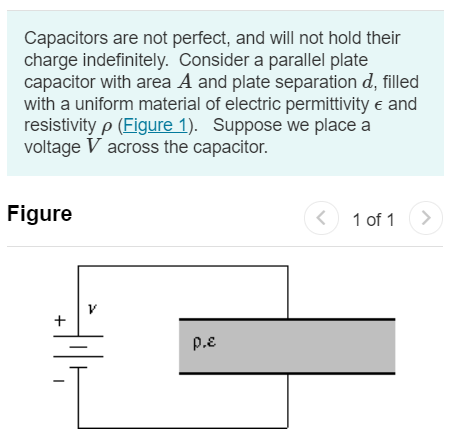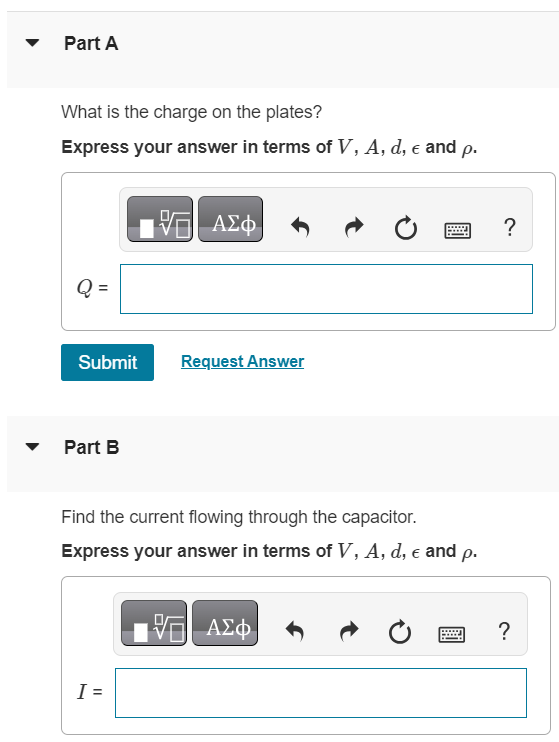Capacitors are not perfect, and will not hold their charge indefinitely. Consider a parallel plate capacitor with area A and plate separation d, filled with a uniform material of electric permittivity ϵ and resistivity ρ (Figure 1). Suppose we place a voltage V across the capacitor. Figure 1 of 1 Part A What is the charge on the plates? Express your answer in terms of V, A, d, ϵ and ρ. Q = Submit Request Answer Part B Find the current flowing through the capacitor. Express your answer in terms of V, A, d, ϵ and ρ. I = Part C Suppose we now disconnect the battery. The charge on the capacitor dissipates through the resistor, exactly like an RC circuit. Find the RC time constant τ for this capacitor. Express your answer in terms of A, d, ϵ and ρ. Part D Suppose the dielectric material is quartz, for which ϵ = 4.43×10−11 Nm2 /C2 and ρ = 7.5×1017 Ωm. What is the value of the time constant for such a capacitor?






You'll get a detailed, step-by-step and expert verified solution.
 Work With Experts to Reach at Correct Answers
Work With Experts to Reach at Correct Answers